Les Trente Glorieuses
description: the thirty years from 1945 to 1975 following the end of the Second World War in France
36 results

Frommer's Paris 2013
by
Kate van Der Boogert
Published 24 Sep 2012
Tatiana de Rosnay’s novel Sarah’s Key, which was released as a film starring Kristin Scott-Thomas in 2010, tells the story of a young girl’s experiences during these events, describes France under Occupation, and highlights the degree to which the French were complicit in, and even enthusiastic about, the Vel’ d’Hiv round-up. Les Trentes Glorieuses (1945–75) After the end of WWII, France embarked on a period of ambitious industrial modernization. The postwar economic boom that followed came to be known as les trentes glorieuses (the 30 glorious years). Wages were higher and increased spending on consumer goods radically changed the culture of everyday life, with more and more French households being equipped with television sets, washing machines, and cars. Women became more independent, and younger people gained more freedom. Many of the lifestyle changes brought about by les trentes glorieuses were explored in the films of the French New Wave, known as la nouvelle vague, which were a celebration of youth, Paris, and above all, cinema.
…
Under the orders of Maurice Papon, the police opened fire on the crowds and savagely assaulted protesters. Over 11,000 Algerian men were arrested and the bodies of a number of Algerians were thrown into the Seine. It is thought that around 200 people died in the massacre, which is commemorated on a plaque on the Pont St-Michel. Many immigrants who came to Paris during les trentes glorieuses found themselves living in bidonvilles (shantytowns) on the peripheries of the city. Slowly, those living in the bidonvilles were relocated to huge housing estates, known as grandes ensembles, in the banlieues. However, these poorly built housing estates soon became sites of spatial isolation and economic exclusion, and many people believe that the current problems in the banlieues date from this period.

Cogs and Monsters: What Economics Is, and What It Should Be
by
Diane Coyle
Published 11 Oct 2021
The experience of Depression and war influenced the intellectual environment created by Keynes among many others, which then shaped the post-war mixed economies of the west. This was the first post-war political economy cycle. The subsequent few decades brought strong economic growth, thanks in part to reconstruction after the conflict, but also to the active Keynesian macroeconomic policies, and the growth of trade. These were les trentes glorieuses, the thirty glorious years in Fourastié’s famous term (Fourastié 1979). Electricity in homes and factories became universal, access to cars spread with towns and cities built or rebuilt to accommodate them, while radio and cinema had their heyday. Electricity and the internal combustion engine are examples of general purpose technologies, technologies which can be used for a range of purposes and spread widely through the economy, with substantial economic and social effects.
…
Hogan, 1998, ‘The Dublin Taxi Market: Re-regulate or Stay Queuing?’, Studies in Public Policy, 3, 1–72. Fitoussi, Jean-Paul, Amartya Sen, and Joseph Stiglitz, 2009, Commission on the Measurement of Economic and Social Progress, 2009, http://ec.europa.eu/eurostat/documents/118025/118123/Fitoussi+Commission+report. Fourastié, J., 1979, Les Trente Glorieuses, ou la révolution invisible de 1946 à 1975, Paris: Fayard. Fourcade, Marion, Etienne Ollion, and Yann Algan, 2015, ‘The Superiority of Economists’, Journal of Economic Perspectives, 29 (1), 89–114. Frank, Robert H., Thomas Gilovich, and Dennis T. Regan, 1993, ‘Does Studying Economics Inhibit Cooperation?’

The New Nomads: How the Migration Revolution Is Making the World a Better Place
by
Felix Marquardt
Published 7 Jul 2021
That a country that failed to pay attention to the needs of its youth was morally bankrupt. That it was time for young people to take matters into their own hands and hit the road. We argued that if French youth took this idea on and acted on it, the ruling class would have to pay heed. Since the end of the three decades of sustained growth the French call Les Trente Glorieuses, which came to a close in 1975, France had been barely plodding along economically. If the young, the lifeblood of the nation, took off, their whole future at the top of the pyramid was in question. The column created a stir and upset a lot of people, to my utter delight. By noon on the day it ran, I was busy doing the rounds on the daily talk shows.
…
movement 123–7, 130, 146–7 education system/Grandes Écoles 48–9, 54, 118, 126 emigration of young people from 48–54, 55, 69, 116–20, 123–7, 130, 145–7 FM childhood in 37–42, 43 FM family first move to 37–8 gerontocratic tradition in 50, 123, 128 Gilets Jaunes movement 48–9 hip-hop in 28, 45–6, 50, 55, 113, 124, 139, 162, 233 Islamist terror attacks in 23–6 Les Trente Glorieuses (three decades of sustained growth) 124–5 London, emigration to from 54–5, 59 racism and 52 ‘republican equality of chances’ (les valeurs de la République) 20, 211 Syrian refugees in 169–75 youth unemployment/lack of opportunity within 48–54, 55, 69, 116–20, 123–7, 130, 145–7 see also individual place name French Islamic Foundation 24 Friedman, Sam 211 Fuerteventura 149 Fulbright scholarship 34–5, 136 Gates, Bill 28 Générations 88.2 (French independent radio station) 48–54 Georgia (nation) 73, 175–8 Georgia (state), US 82–3 Germany 1, 2, 17, 32–4, 37, 38, 42, 43, 47, 72, 73, 79, 100, 101, 126, 132, 138 gerontocracy (government by entitled elders) 50, 124, 127 Ghana 96, 134–5 Gilets Jaunes 48–9 globalisation 11, 51–2, 90 globalism 30, 54 Goodhart, David 40–1 Grand Tour 57, 59 Grandes Écoles 48–9, 54, 118, 126 Great March for Climate Action 218–19 Greece 18, 35, 36, 37, 43, 45, 47, 55, 57, 78, 135 Group, the (religious cult) 64 Hedges, Chris 32 Heimat (mix of home, culture, vernacular, community) 17 Hibbard, Cooper 1–2, 4, 238 Hindriks, Karoli 191 Hine, Dougald 20 hip-hop 28, 45–6, 50, 55, 113, 124, 139, 162, 233 Holiday Swap app 195 Hollande, François 126 Homo erectus 9 homosexuality 102–7 Hughes, Solomon 114–15 Hult 137 hunter-gatherers 9–10, 18, 187 Huntington, Samuel P. 195–6 Hutchinson, Robert 84–5 iEconcalc 78 Ikola, Rabbi 220 Illich, Ivan 232 immigration economic 122–47 see also economic migration education and 48–69 see also education, immigration and emigration 93–121 see also emigration entrepreneurs and 70–92 see also entrepreneurs, migration and Felix Marquardt, transformative power in life of 23–47 see also Marquardt, Felix labelling of 169–200 see also labelling, migration and nomadism and see nomadism ‘out of Africa’ migration of early humans 9, 18, 69 pushback against 201–23 see also liberals refugees and 148–68 see also refugees World Economic Forum, Davos and see World Economic Forum, Davos India 14–15, 76, 80, 83, 111, 118, 130, 155, 156 Citizenship Bill (2016) 140 entrepreneurs returning to 139–45 Youthonomics Global Index (YGI) and 139–40, 145 inequality 16, 20, 31, 49, 209, 210–11, 216, 228, 241 Ingvarsdóttir, Sigurlína 239 initiatory journey 57 ‘internal’ migrations from village to city ix, 10 International Council on Clean Transportation 217 International Herald Tribune 28, 188 international schools 41 ‘inverted totalitarianism’ 32 IPCC (Intergovernmental Panel on Climate Change) 215 Iraq 10, 123, 179–80 ISIS 23, 25 Islam 4, 8, 15, 23–5, 160, 175 Israel 157–8 Italy 36, 126 Ivory Coast (Côte d’Ivoire) 53, 98, 152, 155 Jackson, Wes 227 Japan 77, 93–9, 128, 135, 136, 156 Jews 2, 15, 27, 31, 70, 79, 100, 157–8 Jobbatical 191–2 Johnson, Boris 100, 146 Jung, Carl 212 Jungle, Calais 9 Kaba, Mbake 153–4 Kansas Wesleyan University 206 Kati, Mali 2, 5, 6 Kawaakibi1 Foundation 24–6 Kazakh government 177 Kierkegaard, Søren 212 King, Steve 199 Kobalia, Anastasia 177–8 Kobalia, Vera 175–9, 182 Koum, Jan 71 Kundera, Milan 45 Kurzweil, Ray 181 labelling, migration and 168, 169–82 Amr Maskoun/labelling of refugees 169–73 immigration and emigration, distinction between 174–5 ‘migrant’ and ‘refugee’, conflation of terms 174–5 Mustafa Al Sarajj/labelling of refugees 179–82 refugee, usefulness of term 174 Vera Kobalia/labelling of refugees 175–9 La Croix-Valmer, France 42 Larsson, Sven 179, 180, 181 Latour, Bruno: Où atterrir?

The Globotics Upheaval: Globalisation, Robotics and the Future of Work
by
Richard Baldwin
Published 10 Jan 2019
In essence, communism only survived by becoming more like capitalism while capitalism survived only by become more like communism. The various resolutions of the backlash in the 1920s and 1930s set the modern world on a steady course for decades. The fruits of social calm, booming innovation, and advancing globalization yielded what the French call les trente glorieuses. Thirty Glorious Years Once Roosevelt’s New Deal reforms made the whole socio-economic system politically sustainable in the United States, and similar reforms did the same in other industrial nations, economic growth boomed in the West (as the capitalist world came to be called despite including Japan, Australia, and New Zealand).
…
SOURCE: Author’s elaboration of data published in Berthold Herrendorf, Richard Rogerson, and Ákos valentinyi, Handbook of Economic Growth, vol. 2B, ch. 6, “Growth and Structural Transformation,” http://dx.doi.org/10.1016/B978-0-444-53540-5.00006-9. As both sets of charts illustrate, something historic changed at the end of les trente glorieuses. The steady shift in the share of workers in industry turned on its head. THE SERVICES TRANSFORMATION Catherine Spence’s demise in the London Docklands started our account of the Great Transformation. The demise of the Docklands itself ends it. For centuries, the Docklands rolled their way through booms, busts, and bombings—becoming the Royal Docks in the process.
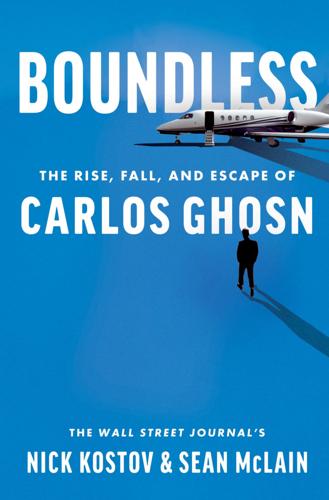
Boundless: The Rise, Fall, and Escape of Carlos Ghosn
by
Nick Kostov
Published 8 Aug 2022
She had told him that her family was middle class, but when Ghosn turned up at her place it was a huge villa with four cars in the garage, including a Porsche and a Mercedes. This is how the American middle class lives? Ghosn thought. He hadn’t seen anything like it in Brazil, Lebanon, or France. When he returned to Paris from the land of opportunity, the country had just emerged from what would be known as Les Trente Glorieuses—the three decades of growth and technological progress following World War II. Graduates of École Polytechnique could envision their future prospects with confidence. Back home in Beirut, however, things were deteriorating. The carefree Lebanon in which Ghosn had grown up, the cosmopolitan playground of jet-setters, was being dragged into the conflicts that surrounded it.
…
See also Suhail Bahwan Automobiles (SBA) Kume, Hiroshi, 59–61 Lagarde, Christine, 107 Latham & Watkins, 140, 172, 174 Lawrence Academy, 230–31 Le Borgne, Jean-Yves, 266 Le Grèves, Frédérique, 143, 153 Le Maire, Bruno, 201, 207 Le Puy-en-Velay, France, 34 Lebanese Press Syndicate, 256 Lebanon civil war in, 29 Ghosn’s privileged life in, 15 judicial officials, 267 Ministry of Justice, 257 tax havens and, 125–26 Lehman Brothers, 88 Les Trente Glorieuses, 29 Lesort, Fabien, 186, 189 Lewis, C. S., 164–65 Lonsdale, Joe, 130 Lott, Trent, 120 Lutz, Bob, 43, 56, 66 Ma Cocotte restaurant, 161 Maaraoui, Alain, 129, 149 Macron, Emmanuel, 137, 139, 140–41, 199 Manaus, Brazil, 8 Mandarin Oriental hotel, 89–90 Maronite Christians, 9 Marshall, Jim, 75 Masaas, Boulos, 16 Matsui, Tomoyuki, 239, 244–45, 247 Mazda, 50 the McKinsey way, 34–35 Michelin Brazilian market, 36–37 Chahid-Nouraï coaches Ghosn, 34–35 as family-run company, 33–34 Ghosn as head of heavy-duty tires research and development, 35 Ghosn as youngest plant manager for, 34 Ghosn in Brazil, 37–38 Ghosn mentoring Édouard, 44–45 Ghosn resigns from, 45–46 headquarters for, 33 Kléber-Colombes and, 35 reaching out to Ghosn, 31 Uniroyal Goodrich merger with.
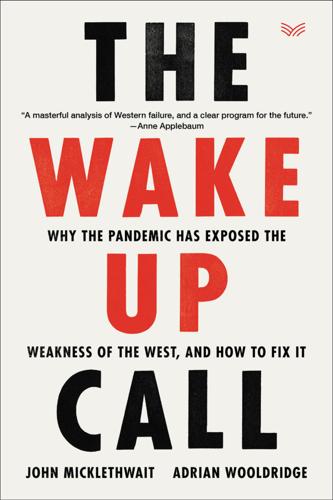
The Wake-Up Call: Why the Pandemic Has Exposed the Weakness of the West, and How to Fix It
by
John Micklethwait
and
Adrian Wooldridge
Published 1 Sep 2020
THE ALARM CLOCK The secret of the West’s success over the past four hundred years is its appetite for creative destruction: just when everything looks hopeless, it succeeds in regenerating itself. Look at the changes wrought by the Roosevelts in the Gilded Age and the Great Depression. Having almost destroyed itself during the Second World War, Europe became the continent of les trentes glorieuses and wirtschaftswunder. Now the West has to recover from Covid, at a time when America’s power is waning and China is strengthening. The question is whether the West can rise to the challenge as it has so many times before and rethink the theory and practice of government—or whether it will fumble about, letting liberty slip away and leaving China to reclaim the global leadership it had when that frightened old tutor sat down to write Leviathan.
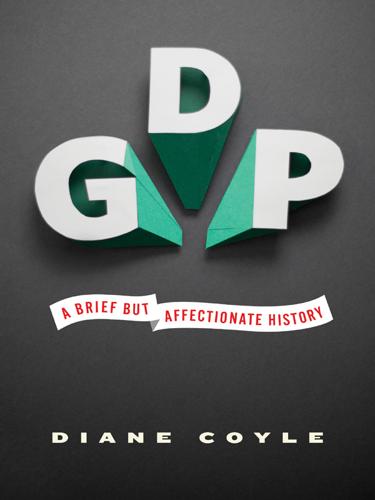
GDP: A Brief but Affectionate History
by
Diane Coyle
Published 23 Feb 2014
Although there were some obvious problems—be it a shortage of housing in the United Kingdom, or the need for rationing of food to continue for years after the end of the war—the foundations of prosperous modern consumer societies were being laid. The period is sometimes known in the English-speaking economics world as the postwar Golden Age. To the French, it is les Trentes Glorieuses. As with any golden age, some people look back on it with fond nostalgia and wonder why we can’t return to that period when GDP seemed to do the bidding of government economic policymakers. THE POSTWAR REBOUND It is one of the distasteful aspects of a disaster that the immediate consequence is a boom in GDP growth.
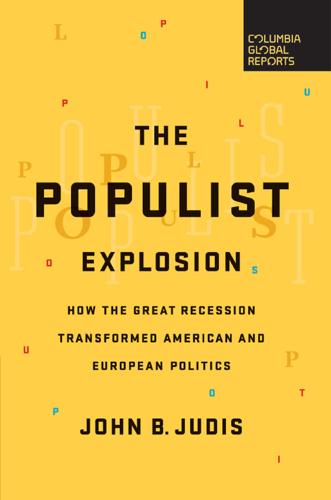
The Populist Explosion: How the Great Recession Transformed American and European Politics
by
John B. Judis
Published 11 Sep 2016
Western Europe benefited from what economist Brad DeLong called a “virtuous circle”: Trade expansion drove growth, growth drove expanded social insurance programs and real wage levels; expanded social insurance states and real wage levels social peace, social peace allowed inflation to stay low even as output expanded rapidly, rapidly expanding output led to high investment, which further increased growth and created the preconditions for further expansions of international trade. During this period, unemployment rates were impossibly low. The rate was 0.6 percent in West Germany in 1970, 2.2 percent in the UK, and 2.5 percent in France. In France, this era was called les trente glorieuses, or 30 glorious years. But Europe began to suffer a downturn in the early ’70s. The principal cause, as in the United States, was a combination of a profit squeeze from a militant labor movement and the development of global overcapacity in key postwar industries like textiles and steel. But in Western Europe, the slowdown was aggravated by the abandonment of capital controls and America’s abandonment of a fixed and overvalued currency that had given Europeans a price advantage.

Chokepoints: American Power in the Age of Economic Warfare
by
Edward Fishman
Published 25 Feb 2025
For almost three decades, the system worked: from the rubble of war emerged a world economy more dynamic and productive than ever before. Countries torn apart under the stress of years of combat, dictatorship, and military occupation blossomed into prosperous welfare states. The French fondly remember this era as les trente glorieuses, or the glorious thirty. But the core features that once made Bretton Woods successful eventually caused friction. Fixed exchange rates, originally considered a guarantor of stability, became a source of distrust and resentment. Multinational corporations found ways to dodge capital controls, and their efforts gradually won backing from a few self-interested governments.
…
Unlike Bretton Woods, the era of economic globalization that surged to prominence in the 1990s and persisted well into the twenty-first century lacked a distinct founding moment. Yet it was nonetheless built on a foundational premise: that economic interdependence would make the world richer and more secure. For a while, it also worked: parts of the global economy that did not partake in les trente glorieuses—including China, the former Soviet bloc, and other developing countries—experienced their own economic miracles, while the United States and its industrialized peers enjoyed another season of prosperity. Economic interdependence indeed made the world richer. But it never proved that it could make the world more secure.
…
GO TO NOTE REFERENCE IN TEXT regular sanctions-planning dialogues: Fishman, “Fix America’s Failing Sanctions Policy”; Edward Fishman, “The Death and Rebirth of American Internationalism,” Boston Review, August 12, 2020, www.bostonreview.net/articles/edward-fishman-tk; Edward Fishman and Siddharth Mohandas, “A Council of Democracies Can Save Multilateralism,” Foreign Affairs, August 3, 2020, www.foreignaffairs.com/articles/asia/2020-08-03/council-democracies-can-save-multilateralism. GO TO NOTE REFERENCE IN TEXT this era as les trente glorieuses: Tony Judt, Postwar: A History of Europe Since 1945 (New York: Penguin Books, 2005), 324–25. GO TO NOTE REFERENCE IN TEXT but the win-win logic: See Robert Wright, Nonzero: The Logic of Human Destiny (New York: Vintage Books, 2001), which heralded the dawn of an interdependent global society.
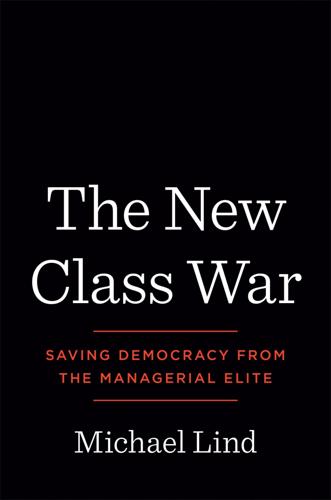
The New Class War: Saving Democracy From the Metropolitan Elite
by
Michael Lind
Published 20 Feb 2020
In one Western country after another, the need to mobilize conscripts and workers for war and the fear of a return to Depression-spawned radicalism had compelled the managerial overclass reluctantly to cut “new deals” with national working classes. The results were unprecedented levels of working-class prosperity and economic growth during what in France was called les Trente Glorieuses, the “thirty glorious years” that followed 1945. But the war-inspired class peace treaties within Western democracies would not last. For many members of the managerial overclass, the need to share power, wealth, and cultural authority with petty tribunes of the working class like trade union officials and small-town politicians and religious leaders was an indignity to be endured only under duress, until they could liberate themselves from constraint.
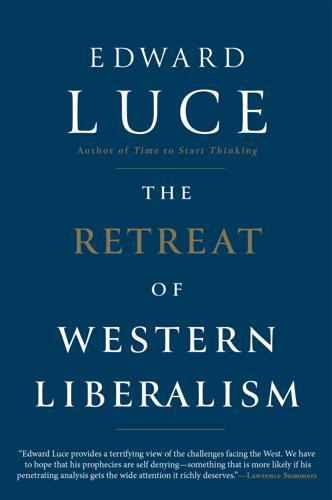
The Retreat of Western Liberalism
by
Edward Luce
Published 20 Apr 2017
As I say, if you want an economic chart that stops you from sleeping you should start with the elephant. Now, recall what came before the elephant. That was what we now refer to as the Golden Age of Western middle-class growth between the late 1940s and the early 1970s, or what the French call les Trente Glorieuses of rising incomes for the bulk of society. The annual gains were almost metronomic. Then something went wrong. It can be corrected, we tell ourselves. The West somehow managed to step off the natural escalator that assured annual income growth of 2 to 3 per cent, which roughly doubled our standard of living every generation or faster.
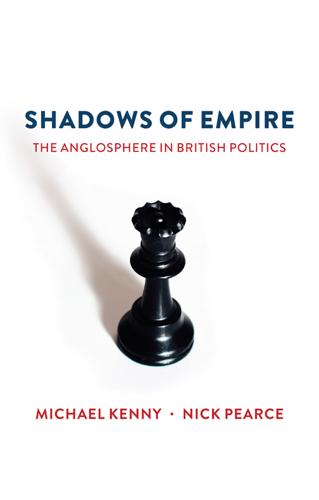
Shadows of Empire: The Anglosphere in British Politics
by
Michael Kenny
and
Nick Pearce
Published 5 Jun 2018
The ‘winds of change’ that Harold Macmillan had caught blowing through Africa would herald the final days of empire. The Suez crisis, and the brutal demonstration of Britain's financial and military subservience to the USA which it supplied, began to bring home to Britain's political elite the economic and political costs of imperial overstretch. And the unfolding economic miracle of Les Trente Glorieuses in Western Europe, which had gathered pace in the 1950s, exposed the relative decline of the British economy and the penalties – in manufacturing competitiveness, export market access and political influence – of staying outside the EEC after the Treaty of Rome was signed in 1957. Between 1950 and 1960, GDP grew at an annual average of 2.7 per cent in the UK, compared with 7.75 per cent in West Germany, 5.85 per cent in Italy and 4.6 per cent in France.

The Price of Time: The Real Story of Interest
by
Edward Chancellor
Published 15 Aug 2022
Instead, Western societies settled into peacetime with what used to be called a ‘mixed economy’, one that was neither capitalist nor socialist. Nor was the post-war experience of financial repression an unmitigated economic disaster. In fact, after 1945 France experienced a prolonged period of strong economic growth, known as Les Trente Glorieuses. Germany enjoyed its Wirtschaftswunder. America’s economy returned to its pre-Depression growth trend. Britain limped along as the ‘sick man of Europe’, but its economy performed better than in recent years. The Bretton Woods period (1945–71) was largely free from speculative bubbles and financial crises.
…
Scott, 203 Florence, 21–3 ‘Fordism’, 89 Fordyce, Alexander, 63 foreign exchanges, xxv; currencies pegged to the dollar, 251, 252, 253; dollar as global reserve currency, xxiii, 118, 239, 251–2, 253, 261, 262–3, 267; French currency during Mississippi bubble, 56–7; growth of reserves, 252, 253, 254–5, 256; international bills of exchange, 24; Louvre Accord (1987), 105–6; printing of money to acquire reserves, 137, 252; Shanghai Accord (2016), 241, 241*; undervalued Chinese yuan, 267–8, 270, 271 Forest Service, US, 154–5 France: 1848 Revolution, xix; allocation of capital in Bretton Woods era, 291; French Louisiana, 50, 52; Law and depreciated government debt, 48, 50, 51–2, 59, 65, 69; Law and paper money, xxii, 47, 52, 55–8; Law as Finance Minister, 46, 57; Law establishes General Bank (1716), 49–50; Law’s Mississippi Company, 46, 50–61, 65, 68, 172–3, 178, 202–3, 273, 286, 298, 308; Les Trente Glorieuses, 302; and long-term bonds, 225; Palais Mazarin, Paris, 54, 54*; rentier term, 7; Revolutionary/Napoleonic Wars, 41–2, 69–70; Royal Bank, 50, 52, 53, 57, 58; war with England (1690s), 38 Francis, Pope, 201, 213 Franklin, Benjamin, Advice to a Young Tradesman (1748), xviii, 22, 28, 190 fraud, 64, 80, 149 free market economics, 95–6, 295–6 Freud, Lucien, 208 Frick, Henry, 157–8 Fridson, Martin, 146 Friedman, Milton, 98, 99, 101, 131 Fugger, Jakob, 202 Fullarton, John, 67–8, 71, 75 Gage, Lyman, 83, 311 Galai, Dan, 228–9 Galbraith, John Kenneth, 287 Galiani, Ferdinando, 218–19, 220, 221, 222, 233 GameStop (retailer), 307 Garber, Peter, 60 Gehringer, Agnieszka, 134–5 Geithner, Tim, 76 General Electric, 156, 157, 159, 170–71 General Motors, 90, 166–7 General Strike (UK, 1926), 86 Genoa, 22, 23, 35, 47–8, 49 George, Henry, 243, 246, 260* Gergy, Jacques Vincent, Count of, 60 Germany, 7, 159, 225, 291, 299; economy in 1920s, 82, 91, 92, 93; and Eurozone crisis, 144–5; negative interest rates in, 192–3, 245; Wirtschaftswunder, 302 Gesell, Silvio, 242–3, 246, 294 ‘gig economy’, 149 Gladstone, William, 40, 72, 76* Glahn, Richard von, 265* Glass–Steagall Act, 232 Global Asset Management, 228, 228* globalization: feedback loop with interest rates, 260–61, 311; first wave of (from 1860s), 260, 311; global aspect of inflation, 122; and great bubbles of history, 263; political backlash against in West, 261; recent phase (from 1980), 260–61, 311 Goetzmann, William, 8†, 14, 60, 247 Gold Exchange Standard, 11, 85, 85*, 86, 87, 90*, 261 Gold Standard, 43, 82, 84–5, 85*, 86, 98, 99, 133, 251 Goldman Sachs, 175, 255, 258 Goodhart, Charles, 105, 121, 127, 246 Gopinath, Gita, 144 Gordon, Robert, 128 Goschen, George, 77, 78–9 Goschen conversion (1888), 65*, 79 Graham, Benjamin, 90–91 Grant, Albert, 73 Grant, James, 82, 118, 141, 148, 191, 194, 230–31, 297; on Fed’s dual mandate, 155; on negative-yielding bonds, 226; on radical monetary gimmicks, 242; on regulation, 232; The Forgotten Depression, 100 Grantham, Jeremy, 183 Great Depression, 98–101, 98*, 105, 108, 125–6, 129, 142–3, 299 see also Wall Street Crash (October 1929) Great Fire of London (1666), 33 the ‘Great Moderation’, 112 Great Recession, 146, 152–3, 181–2, 206–17, 221–4; and secular stagnation argument, 124–5, 126–8, 131; slow recovery in developed world, 124–5, 126–9, 131–2, 150–53, 298–9, 304; and support for democracy, 299 see also financial crisis (2008) Greece, 144–5, 147, 148*, 253, 262, 293; ancient/classical, 6, 9, 10–11, 11*, 13, 13, 17–18, 18†, 20, 200, 200*, 219 Green, Sir Philip, 197 Greensill, Lex, 228* Greenspan, Alan, 110, 132, 226; Fed’s focus on near-term inflation, 110–14; interest rates under, 110–15, 117, 134–5, 134*, 162, 186, 190–91, 204, 226–7, 238, 252–3, 267 Gresham’s Law, 145–6, 224 Griffin, Ken, 209 Gross, Bill, 217, 221, 235, 236, 246 Grotius, Hugo, 40 Guinness (Irish brewer), 79 Gundlach, Jeffrey, 246 Gupta, Sanjeev, 228* H2O (investment company), 228 Hadley, Arthur, 140, 157 Haldane, Andrew, 168, 232, 233, 311 Hamilton, Earl J., 48, 58, 58* Hammurabi’s Code, 9 Hanauer, Nick, 217 Hankey, Thomson, Principles of Banking, 75–6 Hansen, Alvin, 124–5, 126, 127, 128, 129 Harding, William, 84 Harman, Jeremiah, 66 Harriman, Edward H., 157, 158 Hartnett, Michael, 200 Hawtrey, Ralph, 87 Hayek, Friedrich: and concept of time, 32, 95; critique of monetary policy in 1920s, 92, 96, 96*, 101, 105, 108, 114, 133; and deflation/inflation, 100, 101, 105, 113, 133–4, 302; and inequality, 296, 299; interpretation of 1929 Crash, 101, 105; on money, 294, 295, 297*, 312; and ‘natural rate’ of interest, 32, 96, 96*, 133, 269; rejects price stabilization policy, 92, 96, 96*, 108, 133; view of intellectuals, 297, 302–3; view of interest, 297–8, 301; The Denationalisation of Money (1990), 297*; Monetary Theory and the Trade Cycle (1929), 96; ‘The Pretence of Knowledge’ (Nobel prize lecture), 302–3; The Road to Serfdom (1944), 295–6, 298, 302 Haywood, Tim, 228* Hazlitt, Henry, Economics in One Lesson (1946), xx hedge funds, 166, 169–70, 183, 207, 209, 229, 304 Heinz, H.

The Age of Stagnation: Why Perpetual Growth Is Unattainable and the Global Economy Is in Peril
by
Satyajit Das
Published 9 Feb 2016
Over the postwar decades, the emphasis would shift from industrial and social to economic and financial agendas, creating a succession of boom-ier booms and bigger busts, culminating in the GFC. The initial phase of postwar expansion—known variously as the Long Boom, the Golden Age of Capitalism, or the New Gilded Age—spanned a period from around 1950 to the early 1970s. In France the thirty years of economic expansion from 1945–75 is known as Les Trente Glorieuses (the Glorious Thirty), rivaling La Belle Époque (the Beautiful Era, which covered the period from 1871 to the beginning of World War I). Its hallmarks were economic prosperity, low unemployment, rising incomes, growing wealth, increased availability of social services, and greater affordability of household items, leisure activities, and holidays.
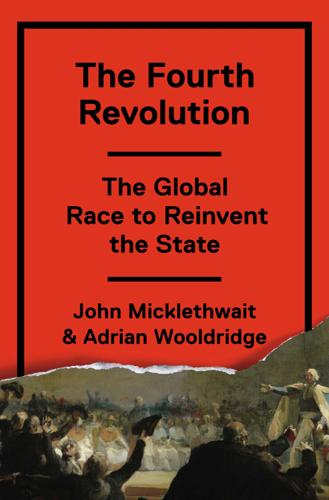
The Fourth Revolution: The Global Race to Reinvent the State
by
John Micklethwait
and
Adrian Wooldridge
Published 14 May 2014
And social democratic governments continued to sanction sterilization for “hygienic purposes” into the age of ABBA: Between 1934 and 1976 some six thousand Danes, forty thousand Norwegians, and sixty thousand Swedes, 90 percent of them women, were subjected to compulsory sterilization.12 But for the time being the big state seemed to work—and rapid economic growth more than made up for a bit of bossy social engineering. For America the postwar era was one of unrivaled supremacy—of new freeways and schools, the GI Bill, and expanding opportunities. For the British it was an era when the ordinary people had never had it so good. The French had les trente glorieuses. The Germans basked in the Wirtschaftswunder. The state showed that it could be enlightened: In France and Germany many of the brightest minds went into government. It also showed that it could be flexible. In the 1960s, even as they hung on to the commanding heights of the economy and took away half of many people’s income in taxes, politicians loosened their grip on people’s private morals: Divorce, abortion, and homosexuality all became legal.

Empire of Things: How We Became a World of Consumers, From the Fifteenth Century to the Twenty-First
by
Frank Trentmann
Published 1 Dec 2015
This book follows this momentum and assesses its consequences for social life and politics. To do so, it presents an alternative account to that of the ‘affluent society’, which has continued to inform the popular imagination and treats consumption as a phenomenon – or disease – of the decades following the Second World War: the era of the boom, the Wirtschaftswunder or les trente glorieuses. This is the period commonly associated with the rise of hedonism, the power of marketing and advertising men, the coming of the credit card, self-service supermarkets and, above all, the American way of life. It is to these years that commentators trace the root cause of today’s fixation with consuming more and more.
…
The neo-liberal 1990s told a similar story, but celebrated the triumph of choice and markets. The end of our own era of affluence in 2009 and the decline of America are an opportune moment to take a broader view. The golden years from the 1950s to the early 1970s – das Wirtschaftswunder, il miracolo, les trente glorieuses – brought annual growth rates of 5 per cent to Western Europe, unprecedented in history. Affluence, however, came in the wake of an equally extraordinary series of transformations that compressed into a single generation total war (1914–18), a world depression (1929–31), the rise of totalitarian regimes and another even more brutal world war (1939–45).
…
Vera Dunham, In Stalin’s Time: Middle-class Values in Soviet Fiction (Cambridge, 1976), 43–8. For film and fashionability, see Juliane Fürst, ‘The Importance of Being Stylish’, in: Juliane Fürst, ed., Late Stalinist Russia: Society between Reconstruction and Reinvention (London, 2006), 209–30. 90. Jean Fourastie, Les Trente Glorieuses, ou la revolution invisible de 1946 à 1975 (Paris, 1979), 17: in 1975 there were 212 homes, of which 210 had a fridge; 197 gas or electric cooking; 100 central heating. They owned 280 cars; 250 radios; 200 TVs; 180 washing machines; 150 interior WCs. 91. Galbraith, The Affluent Society, 199f., and 128–9, 203 and 218 for the above.
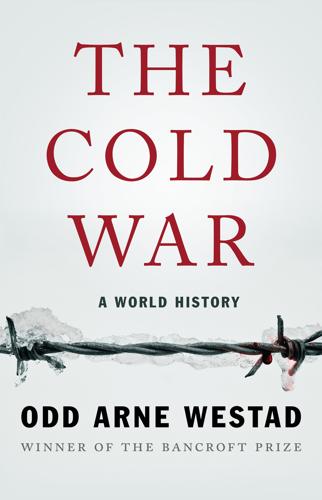
The Cold War: A World History
by
Odd Arne Westad
Published 4 Sep 2017
This had happened on the back of strong economic growth, with the West German economy expanding 5.5 percent per year on average in the 1960s, the French 7 percent, and the Italian an astonishing 8 percent. For many countries the 1960s was the most intense growth period of all, part of what in France was called Les Trente Glorieuses, the glorious thirty postwar years of economic boom. In the core countries of the western European economy, economic growth led to full employment and better conditions for workers, at least in terms of buying power. The regions at the periphery also benefitted, but on different terms: their benefit was as much in the export of labor as in local industrialization.
…
Asia and, 157–158, 230–231 Congo crisis, 282 covert actions in Iran and Guatemala, 287 Cuba and, 297–301 election (1952), 224 Guatemala and, 345–346 India and, 151–153 Indonesia and, 327–328 Iran coup and, 269 Japanese exports and, 400 Korean War, 181–182, 224 Middle East and, 456 militarization of Cold War, 287–288 New Look policy, 225 nuclear deterrence, 224–225 Pakistan and, 427 Paris summit (1959), 229–230 relations with Soviet Union, 228–230 Suez crisis, 272–274 Vietnam and, 150, 315 in World War I, 26 El Salvador, 499, 532, 570 ELAS (Greek People’s Liberation Army), 75–76 elites post-WWII violence against, 74–75 power transfer to after World War II, 129, 132 Engels, Friedrich, 11 Enlightenment values, 8 environmental problems, 522, 544, 596 Eshkol, Levi, 337 Estonia, 123, 582, 600–601, 609 Ethiopia, 487–489, 566 Eurafrique, 275–276 Eurocommunism, 373, 503 Europe empires built by Europeans, 8–9 epoch of predominance, 9 globalization of, 15 integration, 383–384, 516–519, 592–593, 623 Korean War concerns in, 176–177 Marshall Plan, 94–95, 102, 110–113, 115, 210–212, 214–215, 217, 219 post-Cold War, 624 post-WWII, 71–98 postwar devastation, 71–73 regional identities, 518 Stuttgart Declaration (1983), 517–518 US influences after WWI, 29–30 European Coal and Steel Community, 215–217 European Community, 516–518, 593 European Economic Community (EEC), 216–217, 382, 384, 393 European Free Trade Association, 384 European Nuclear Disarmament, 521–522 European Parliament, 516, 519 European Union, 17, 593 exchange rates, floating, 396–397 factory councils, 189 Falkland Islands, 519, 571 Fanon, Franz, 270 farming, collective, 186–187, 207–208 Farouk (King), 452 Fascism, 27, 30, 36–38, 73 Fatah, 459–460, 462 Fatherland Front, 63, 80 Federal Republic of Germany, 217–218, 386, 516, 606 Federation of Socialist Workers, 11 financial revolution, global of 1980s, 525–526 Finland, 44, 74 Firmenich, Mario, 354, 361–362 Five Principles of Peaceful Coexistence, 432 Food and Agriculture Organization, 100 Ford, Gerald, 366, 420, 466–468, 477–479, 483–484 Ford, Henry, 30 Ford foundation, 221 Forest Brothers, 123 Fortuny, José Manuel, 347 Fourteen Points, 28 Fourth Republic, 115 Frahm, Herbert (Willy Brandt), 37 France Algerian conflict, 276–278 anti-Americanism, 115 Communists in, 74–75, 98, 113–116, 177, 219, 275–276, 372–373, 379 Czechoslovakia and, 96 declaration of war on Germany (1939), 40 decolonization, 264–267, 274–278 economic growth, post-WWII, 218 European Coal and Steel Community (ECSC), 215–217 European integration, 274–275, 519 GDP decline in WWI, 25 German occupation of, 41 Gorbachev and, 547 Les Trente Glorieuses, 371 Marshall Plan funds, 94, 113, 115 in Middle East, 449–450, 452 Mitterand’s Right turn, 520 nuclear weapons, 214, 382, 416, 507 positive image of Soviet Union by people of, 114 reduced global status, 222 Suez crisis, 272–274 trade unions, 114 Vichy government, 149, 212 Vietnam and, 56, 150–151, 313, 315–316 views on Communism post-WWII, 55 welfare in 1930s, 39 youth protests in 1968, 377–379 zone of occupation in Germany, 51, 107 Franco, Francisco, 38, 73 Frei, Eduardo, 355 French Communist Party, 41–42, 98, 115, 219, 275–276 French Revolution, 9, 261 French West Africa, 277 Friedan, Betty, 380 Front for the Liberation of Mozambique (FRELIMO), 482 Fuchs, Klaus, 121, 310 Galbraith, John Kenneth, 415 Gandhi, Indira, 425, 434, 438–447, 564 Gandhi, Mohandas, 55–56, 264 Gandhi, Rajiv, 564–565 gas, exports by Soviet Union, 504–505, 528 Gates, Robert, 533 Gaza Strip, 154, 461 Geisel, Ernesto, 359 Geneva Accords, 314–315 Geneva summit (1955), 229 Genscher, Hans-Dietrich, 606–607 Gerasimov, Gennadi, 545 Gerhardsen, Einar, 96 German Democratic Republic (GDR), 193, 292, 294, 387–388, 515, 546, 590–591 Germany attack on Soviet Union, 43–46 Communists in, 37, 116, 193 currency reform, 110–111 declaration of war on United States, 47 defeat of, 58 division of, 111, 116 GDP decline in WWI, 25 German-Soviet Nonaggression Pact, 40–42, 44, 48, 543 Marshall Plan, 95, 113 military production in WWII, 50 in NATO, 605 as one-party state, 36 post-WWI conditions in, 107 reunification, 110, 217, 297, 385–386, 546, 590–594, 593, 605–607, 624 submarine warfare against shipping, 21 Weimer Republic, 36 zones of occupation, 95, 107–111 Gerő, Ernő, 201–202 Ghana, 262, 271, 277, 283, 324, 566 glasnost, 541, 543–546, 581, 602 global transformation, late-twentieth-century, 553–578 Glucksmann, André, 417 Golan Heights, 460, 464 Golitsyn, Anatolii, 310 Gomulka, Wladyslaw, 83, 125, 201, 206 gongchandang, 558 González, Felipe, 552 good neighbor policy, 344 Gorbachev, Mikhail Sergeevich, 534–552 Afghanistan and, 539–540 background of, 534–535 Baltic states and, 609 Bush and, 581, 599–600, 610, 615 Castro and, 569, 571 challenges to, 602, 604 China and, 586–587 Cold War end, 579 concern of threat of nuclear war, 537 coup of August 1991, 611–613 democratization and, 579, 582–583, 600–601, 603–604, 611, 614–615 East Germany and, 590–591 eastern Europe and, 545–547, 585–586 economic reform, 582, 611 election as general secretary, 534 end of Cold War, 617 Germany and, 604–605 glasnost, 541, 543–546 international policies, 552, 604 nuclear weapons and, 536–537, 540–541, 548 perestroika, 541, 543, 545–546, 551, 622 Poland and, 589 political reform, 544, 550–551, 579, 582, 601 Rajiv Gandhi, 564–565 Reagan and, 537–538, 540–541, 546, 548–549, 568, 581 referendum of March 1991, 609–610 reforms, 541–547, 550–551, 579–583, 599–603, 611, 621–622 release of political prisoners, 543 resignation, 613–616 resistance to leadership of, 582 rule-of-law state, 551 on Saddam Hussein, 610 Shevardnadze resignation, 608 style, 536 Thatcher and, 547, 581–582 trips abroad, 535 United States relations, 547–550 western Europe and, 537, 546–547 withdrawal from Third World, 568–569 Gorbachev, Raisa, 612–613 Grotewohl, Otto, 193 GosPlan, 542 Gottwald, Klement, 94 Goulart, João, 351–352 grain, imports by Soviet Union, 529 Grand Alliance, 43–44, 58, 68 Great Depression, 35, 39 Great Leap Forward, 242–244, 246–248, 254, 256, 292, 404 Great Patriotic War, 52, 54 Great Powers, 66, 84–85, 222, 605, 618, 627 Great Proletarian Cultural Revolution.
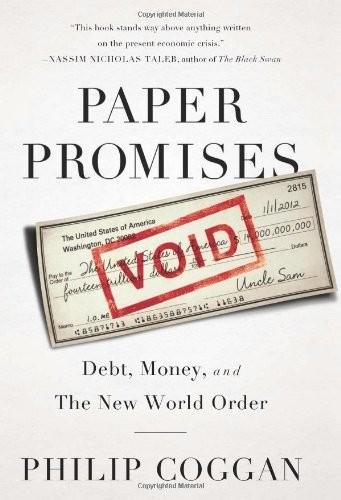
Paper Promises
by
Philip Coggan
Published 1 Dec 2011
The Bretton Woods era is still seen by many people as an extraordinary success. This was undoubtedly true of continental Europe, which recovered remarkably quickly from the worst efforts of Hitler. In Germany, there was the Wirtschaftswunder, or economic miracle, in the western part of the country. In France, they talk of les trente glorieuses, or glorious thirty years. In each case, the old laissez-faire model appeared to have been proved wrong. Europeans could use economic management to enjoy a high standard of living, low unemployment and generous social benefits. The picture was slightly different in the English-speaking economies of America and Britain.
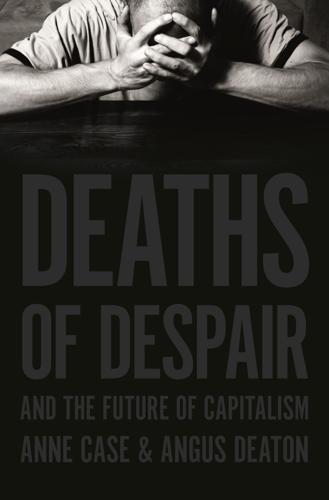
Deaths of Despair and the Future of Capitalism
by
Anne Case
and
Angus Deaton
Published 17 Mar 2020
Almost everyone in the world was richer in 2000 than their grandparents, or great- or great-great-grandparents, had been when Queen Victoria died and Louis Armstrong was born in 1901, adding to another century of progress before that, from 1800 to 1900. In the rich countries of western Europe and North America, the rate of income growth reached its all-time high in the period known in France as Les trente glorieuses, the thirty years after the Second World War. During those years in the United States, not only was the growth of national income per head faster than ever before, it was also widely shared by rich, poor, and middle class alike. Education is a similar story. In 1900, only a quarter of people graduated from high school; by midcentury more than three-quarters did.

Markets, State, and People: Economics for Public Policy
by
Diane Coyle
Published 14 Jan 2020
The first aim points to keeping prices down, the other two require investment and therefore prices high enough to generate a return on the necessary finance. In many countries, a lot of investment in power stations and networks took place in the postwar decades. This was only partly reconstruction. Those decades of rapid economic growth in the late 1940s to late 1970s (so impressive in retrospect that they are referred to in French as les trente glorieuses) induced an even faster growth in demand for energy. Subsequently, the oil shocks of the 1970s, and the shift away from manufacturing to services, led to a big drop in the energy intensity of economic growth. The energy ratio (energy used per unit of GDP) in the OECD member countries had dropped to 57% of its 1970 level by 2001.

An Extraordinary Time: The End of the Postwar Boom and the Return of the Ordinary Economy
by
Marc Levinson
Published 31 Jul 2016
But not even a promoter with a Texas-size imagination would have bet that by the early 1970s this dusty burg would boast an automobile plant, a vast amusement park, a four-year state university, and a major-league baseball team—much less that pastures and pecan orchards would give way to street upon street of ranch houses with brick facades and two-car garages to accommodate a 2,000 percent increase in population.1 Such transformations were not unusual in the years after the Second World War. The French called this period les trente glorieuses, “the thirty glorious years.” The British preferred “Golden Age”; the Germans, Wirtschaftswunder, or “economic miracle”; the Italians, simply il miracolo, “the miracle.” The Japanese, more modestly, named it “the era of high economic growth.” In any language, economic performance was stellar.
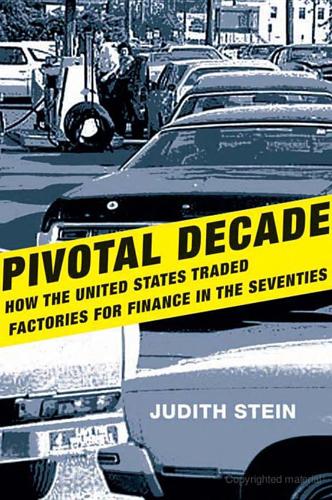
Pivotal Decade: How the United States Traded Factories for Finance in the Seventies
by
Judith Stein
Published 30 Apr 2010
By 1973, Western Europeans were 50 percent richer than Argentineans.17 The average rate of unemployment in Europe of the 1960s was 1.5 percent. The number of automobiles in France and Germany increased twentyfold between 1950 and 1966. Income in Western Europe rose from about 40 percent of American levels in 1950 to over 70 percent by 1973.18 The German variation was called the “economic miracle,” the French called it “les trente glorieuses,” and the English, the “golden years.” Italian film epitomized the change. In 1949, Vittorio de Sica’s hero in the Bicycle Thief was a man looking for a job in postwar Italy. In 1960, the hero of Federico Fellini’s La Dolce Vita was one who had a very good job and life, but was alienated from both.

The Shifts and the Shocks: What We've Learned--And Have Still to Learn--From the Financial Crisis
by
Martin Wolf
Published 24 Nov 2015
Erik Brynjolfsson and Andrew McAfee of the Massachusetts Institute of Technology argue, instead, not only that the measured decline in productivity growth in recent years is a product of a failure to measure output correctly, but that an age of accelerating technological progress is ahead of us, as intelligent machines and ‘big data’ transform our economy and our lives.35 At this stage, the only sensible thing to say is that we do not know what promise of a more productive future new technologies hold, though it seems likely that if it is as dynamic as some expect, it will also tend to generate even bigger increases in inequality of earnings and incomes between digital haves and have-nots. If one takes these elements together, the growth rate of the high-income countries may be substantially slower in the future than it was even in the decades leading up to 2007, let alone the magnificently prosperous years from 1945 to 1975 – les trentes glorieuses, as the French call those three decades of economic boom. This will have many difficult consequences: the distributional struggle will be more intense and political stability less assured; the relative power of the high-income countries will shrink; the public finances will be more difficult to manage; and the beneficiaries of public spending – particularly the old – will find the resources at their disposal shrinking.

More: The 10,000-Year Rise of the World Economy
by
Philip Coggan
Published 6 Feb 2020
And a greater emphasis on home working will reduce the need for the daily commute. Our grandchildren may not understand the concept of a “rush hour” at all. — 12 — FROM THE WONDER YEARS TO THE MALAISE: 1945–1979 The three decades after the Second World War were a period of increasing prosperity in the Western world. In France, they were known as Les trentes glorieuses; in West Germany, as the Wirtschaftswunder. Unemployment stayed low and there was barely a recession. The consumer goods that had been invented in the previous 50 years finally came within the reach of most families. All this happened because the developed world avoided many of the mistakes that followed the First World War.

Good Economics for Hard Times: Better Answers to Our Biggest Problems
by
Abhijit V. Banerjee
and
Esther Duflo
Published 12 Nov 2019
When Esther was born, late in 1972, France had about four times the GDP per capita than when her mother, Violaine, was born in 1942.3 This was typical of the Western European experience. GDP per capita in Europe increased by 3.8 percent every year between 1950 and 1973.4 It’s not for nothing that the French call the thirty years after the war les Trente Glorieuses (“the Glorious Thirty”). Economic growth was driven by a rapid expansion in the productivity of labor, or the output produced per hour worked. In the United States worker productivity grew at 2.82 percent per year, which meant it would double every twenty-five years.5 This rise in labor productivity was large enough to more than offset a decline in hours worked per head that was going on at the same time.
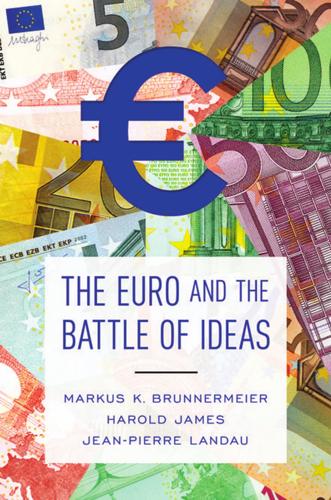
The Euro and the Battle of Ideas
by
Markus K. Brunnermeier
,
Harold James
and
Jean-Pierre Landau
Published 3 Aug 2016
Raymond Barre, a European commissioner who then became prime minister from 1976 to 1981, was lauded by the president at the time, Valéry Giscard d’Estaing, as “the best economist of France.”46 But “economist” was a dirty word. As the late 1970s were a time of increased inflation and unemployment, the end of the postwar euphoria of les trentes glorieuses, and a period of general disenchantment with the political elites that had until then managed the Third Republic, the concept of economist as ruler looked sinister rather than beneficent. In the 1990s, another economist finance minister, Dominique Strauss-Kahn, also attracted more criticism than praise.
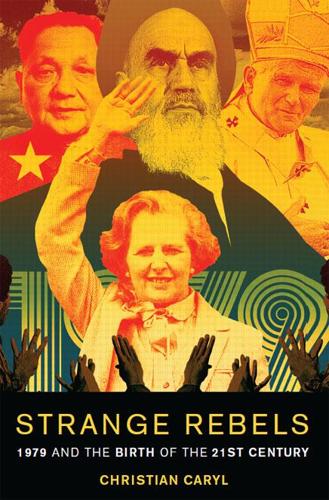
Strange Rebels: 1979 and the Birth of the 21st Century
by
Christian Caryl
Published 30 Oct 2012
For much of the West, the 1970s marked the end of a long period of extraordinary economic growth. Virtually all the countries of Western Europe as well as the United States experienced an enormous surge in prosperity for the first thirty years after the end of World War II. (The French, indeed, refer to this period as les trente glorieuses, “the glorious three decades.”) Americans, in particular, watched productivity increase steadily from year to year, as did wages and consumption. Everyone benefited: factory workers saw their standard of living rise just as precipitously as that of their bosses. For the first time, even manual laborers could afford washing machines, vacations to faraway places, or college educations for their kids.
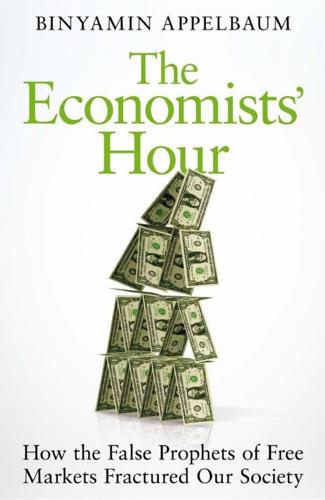
The Economists' Hour: How the False Prophets of Free Markets Fractured Our Society
by
Binyamin Appelbaum
Published 4 Sep 2019
Bretton Woods was an ersatz gold standard: other nations pledged to redeem their currencies for dollars, and the United States promised that it would redeem dollars for gold.5 The system largely succeeded in stabilizing exchange rates for three decades. The world experienced a recrudescence of prosperity the French fondly dubbed Les Trente Glorieuses. But the Bretton Woods system ultimately undermined the economic dominance of the United States. The root of the problem was that the rest of the world needed dollars. In some ways this was a nice kind of problem: it meant the rest of the world was willing to trade goods for dollars, and then to sit on the dollars rather than using the money to buy goods from the United States.* Moreover, the purchasing power of each dollar steadily increased.
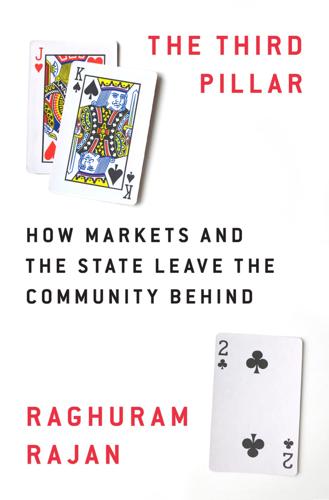
The Third Pillar: How Markets and the State Leave the Community Behind
by
Raghuram Rajan
Published 26 Feb 2019
In addition, the postwar baby boom added to its population and to overall economic growth, with the French population growing by nearly 30 percent between 1946 and the late 1960s.10 No wonder French writer Jean Forastie, writing in 1979 about the postwar transformation of France, titled his book Les trente glorieuses, ou, La revolution invisible de 1946 a 1975 (The Glorious Thirty: Or, the Invisible Revolution between 1946 and 1975). The Germans were no less ebullient about their Wirtschaftswunder (“economic miracle”). How did Western Europe know what to do to grow? Western Europe was exceptional but not unique.
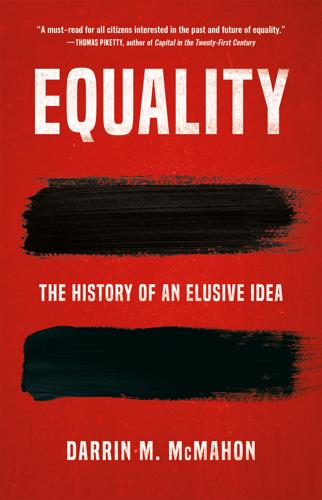
Equality
by
Darrin M. McMahon
Published 14 Nov 2023
In country after country, the share of national income devoted to social security grew, with money lavished on pensions, health care, education, culture, housing, family assistance, and unemployment and disability insurance. And given that such initiatives were carried out in the context of a postwar economic boom—what Germans call the Wirtschaftswunder (economic miracle), and the French les trentes glorieuses, the thirty glorious years that followed the peace of 1945—there was money to fund them, meaning that growth and compression occurred together. The long dark night of war gave way to glimmers of a more optimistic view of the future, and a recovery of the hope expressed intermittently since the late eighteenth century that an expanding equality lay on humanity’s horizon.47 Already in 1949, the British sociologist T.

Power and Progress: Our Thousand-Year Struggle Over Technology and Prosperity
by
Daron Acemoglu
and
Simon Johnson
Published 15 May 2023
But events, at least in the medium run, proved Zweig right. After World War II, much of the Western world, and some countries in Asia, built new institutions supporting shared prosperity and enjoyed rapid growth that benefited almost all segments of their societies. The decades following 1945 came to be referred in France as the “les trente glorieuses,” the thirty glorious years, and the feeling was widespread throughout the Western world. This growth had two critical building blocks, similar to those that had begun to emerge in the United Kingdom during the second half of the nineteenth century: first, a direction of travel for new technology that generated not just cost savings through automation but also plenty of new tasks, products, and opportunities; and second, an institutional structure that bolstered countervailing powers from workers and government regulation.

Slouching Towards Utopia: An Economic History of the Twentieth Century
by
J. Bradford Delong
Published 6 Apr 2020
Louis Menand, “How Women Got in on the Civil Rights Act,” New Yorker, July 21, 2014, www.newyorker.com/magazine/2014/07/21/sex-amendment. 24. Goldin, Understanding the Gender Gap, 217. 25. Betty Friedan, The Feminine Mystique, New York: W. W. Norton, 1963, 474. 14. Thirty Glorious Years of Social Democracy 1. Jean Fourastié, Les Trente Glorieuses: Ou, la Révolution Invisible de 1946 à 1975, Paris: Hachette Littérature, 1997 [1949]. 2. Antonio Gramsci, “Americanism and Fordism,” in Selections from the Prison Notebooks of Antonio Gramsci, London: Lawrence and Wishart, 1971 [1934], 277–320; Charles S. Maier, “Between Taylorism and Technocracy: European Ideologies and the Vision of Industrial Productivity in the 1920s,” Journal of Contemporary History 5, no. 2 (1970): 27–61. 3.
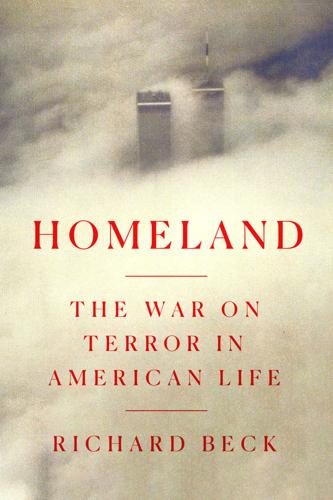
Homeland: The War on Terror in American Life
by
Richard Beck
Published 2 Sep 2024
Finally, the enormous levels of military spending made possible by the beginning of the Cold War allowed the United States to pump even more money into the world economy. The result of all of this was twenty-five years during which the world economy grew at the fastest rates ever recorded. The French, rounding the time frame up by five years, simply named the period Les Trente Glorieuses. In the 1950s, world real GDP—“real,” as opposed to “nominal,” being the version of GDP that accounts for the distorting effect of inflation on output figures—grew at an average annual rate of 4.5 percent. In the 1960s, that figure jumped to roughly 5.5 percent, which is astounding.[14] A car company that started the decade making some 100 cars a week and then grew at a rate of 5.5 percent each year would be making some 170 cars a week ten years later, a 70 percent increase.

Roller-Coaster: Europe, 1950-2017
by
Ian Kershaw
Published 29 Aug 2018
For West Germans these were the barely believable years of the ‘economic miracle’. But the ‘miracle’ was far from confined to one country. Italians, too, saw their post-war economic recovery as nothing short of miraculous. The French looked back on the era between 1946 and 1975 as the ‘glorious thirty years’ (‘les trentes glorieuses’) – even if, in any other than an economic sense, some of those years were far from glorious. The British, told by their Prime Minister, Harold MacMillan, that they had ‘never had it so good’, spoke of ‘the affluent society’, though, for all the improvements, ‘affluence’ scarcely covered the living conditions of much of the British population.

Capitalism and Its Critics: A History: From the Industrial Revolution to AI
by
John Cassidy
Published 12 May 2025
The post-Keynesian models, including the Harrod-Domar model and its modern variants, are useful for explaining the economic challenges facing both poor countries, which don’t have enough savings to finance large-scale capital investments, and advanced countries operating at the technology frontier, such as the United States. Robinson didn’t see the Cambridge Capital Controversy in these terms. She believed it was ultimately an ideological contest. As it dragged on, she continued to engage in broader debates about the progress of what the French demographer Jean Fourastié would label Les Trente Glorieuses. In 1957 Harold Macmillan, the Conservative prime minister, issued his famous remark: “Most of our people have never had it so good.” Five years later President John F. Kennedy declared in the 1962 Economic Report of the President, “The record of the economy since 1946 is a vast improvement over the prolonged mass unemployment of the 1930’s.”52 The report was prepared by the Council of Economic Advisers, whose chairman, Walter Heller, taught at the University of Minnesota.

The Rise and Fall of American Growth: The U.S. Standard of Living Since the Civil War (The Princeton Economic History of the Western World)
by
Robert J. Gordon
Published 12 Jan 2016
Both world wars greatly delayed implementation of the Great Inventions of the late nineteenth century in Europe and Japan, so much so that in 1950 the level of labor productivity in western Europe was only half that in the United States. When Europe caught up in the years the French call “les trentes glorieuses” (1945–75), Europeans were chasing the frontier carved out by the United States decades earlier. In fact, it has been claimed that the percentage of the French population having access to electricity and an automobile in 1948 was roughly equal to that of the United States in 1912. Not only is this book limited to the American experience between 1870 and 2014, but it is also limited to the viewpoint of the household in its twin roles as consumer and worker.